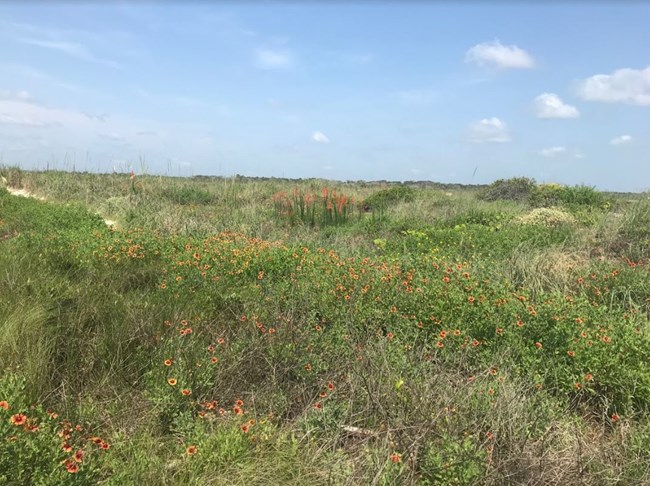
But besides supplying poets and artists with endless inspiration, flowers also serve an ecological role. They are the reproductive parts of angiosperms- by definition, flowering plants that first appeared in the fossil record about 125 million years ago. Flowers contain male and/or female structures: Stamens are the male parts, with pollen-containing anthers resting atop stalk-like filaments. The female pistils consist of a pollen-capturing stigma, a long style underneath, and finally an ovary in which reside eggs, or ovules. Surrounding the pistils and/or stamens are the petals that so often attract our attention, and these are sometimes cupped in sepals- typically green structures that protect the petals before they bloom and often remain to form a base. When both stamens and pistils are present, the flower is said to be “perfect”, or bisexual. Alternatively, flowers can be unisexual, or “imperfect”. If there are male and female flowers on a single plant, that plant is considered to be monecious. If the male flowers are on one plant and the females on another, then the plants are dioecious (botanically speaking). Regardless of which plant contains which type of flower, or if the flowers are perfect or imperfect, there still needs to be a mechanism by which the flowers are fertilized in order that the plant may reproduce (the process known as pollination). That is where the petals come in to play. They (in their myriad shapes and colors) attract pollinators. Pollinators are animals that have co-evolved a relationship with angiosperms whereby each organism benefits. The animals realize that flowers’ petals “advertise” a nutritious meal in the form of pollen and/or nectar. (Nectar contains sugar and amino acids and is produced by nectaries, usually found at the base of the flower petals.) In the process of obtaining this natural sustenance, the pollinator tends to move from flower to flower and inadvertently moves pollen from one flower to another. Invariably pollen from one flower’s stamen is brushed onto the pistil of another flower. In this way sexual reproduction takes place when a fertilized ovule becomes a seed that contains an embryo. The ovary in turn develops into a fruit that may be spread by water or wind, or become a tasty meal for an animal that will then spread the seed(s) and perpetuate the cycle. Which animals provide the vitally important service of pollination? Several do, including: birds, bees, bats, butterflies, moths, beetles, etc. It should be noted that the wind can also blow pollen from one flower to another, and in fact non-flowering plants typically rely solely upon the wind. |
Last updated: March 25, 2019
